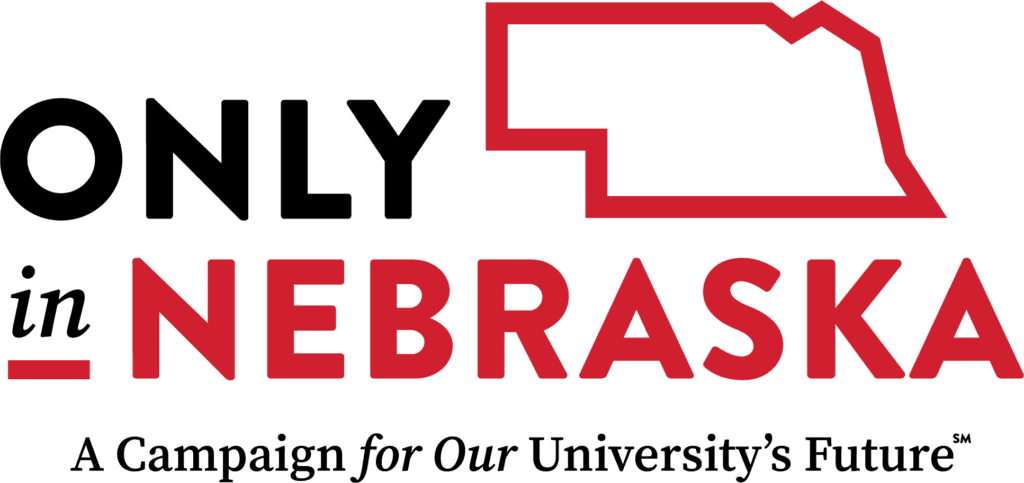Nursing student plans for career critical to her hometown


‘This new building will prepare us even more’
She’s proud she grew up in Ogallala, a town of about 5,000 people in western Nebraska with a high school, a movie theater, a bowling alley, a water tower that’s been painted to look like a UFO (with extraterrestrial beings peeking out of the windows) … And a quality of life that’s out of this world.
“Everybody just knows everybody,” said Jenna Paloucek, a student at the University of Nebraska Medical Center’s College of Nursing Lincoln Division. “It’s such a welcoming community.”
Everybody in Ogallala is proud when they hear she’s studying to become a nurse, Jenna said, but everybody immediately asks this question:
Are you coming back to the area?
Yes.
She plans to live there for the rest of her life and become a nurse and a mom. After graduating next May, she hopes to enroll in UNMC’s Doctor of Nursing Practice program. After that, she hopes to work as a nurse practitioner in women’s health in Ogallala.
The whole birth process — bringing human beings into this world — has always fascinated her. But to get specialized care, women in her hometown have to drive about an hour.
“There isn’t a women’s health facility in Ogallala,” she said, “so I would love to provide that for Ogallala and all those surrounding towns.”
Paloucek lives in Lincoln for now. She loves the college’s new state-of-the-art building that opened in July on the University of Nebraska–Lincoln campus. The outside is beautiful. She loves how the big windows seemed to welcome her that first day. She loves the new technology and big spaces inside and all the places she and the other students can study and relax and practice their hands-on skills.
“Everybody was so excited to start the school year because of our new building,” she said. “Everybody was taking pictures outside the building and posting them all over social media because we’re so proud of this building and so excited to be here. It’s just amazing. And all the little touches that they put in for us will really allow us to get the best education possible and will allow us to be the best nurses, too, someday.”
Paloucek especially loves the high-tech simulation labs.
“They have so many cool features,” she said. “Our labor and delivery mannequin — she can speak nine different languages. We actually did the feeling of a uterus after birth. We got to feel a boggy one and then a tight one — what it should feel like.
“These simulations are going to prepare us for more than what we would be without them.”
The new building includes:
World-class, technology-enriched learning spaces that immerse the students in real-world scenarios. Simulation laboratories, including an operating room, neonatal intensive care and other realistic health care settings, feature high-fidelity mannequins to create real-life patient care situations for instructing students. Instructors use a control center to manipulate the care requirements of each simulation room.
A bigger space that provides the college with room for future program growth in learning and research. Its new research suite can house up to four major research projects, which is more space than in the past.
A perfect opportunity for enhanced collaboration with the University Health Center (UHC). The health center is also housed in the new building.
Half of the space in the new building belongs to the College of Nursing Lincoln Division, the other half to the University Health Center. Nebraska Medicine, UNMC’s primary clinical partner, operates the UHC clinic and employs its physicians, nurse practitioners and other staff. The clinic has 26 examination rooms with space for triage, procedures, casting and other services. The clinic also includes a wellness kitchen to promote healthy nutrition; dental, optometry, radiology and laboratory services; and an area dedicated to helping students manage stress and anxiety.
Juliann Sebastian, Ph.D., dean of the College of Nursing, said faculty and students are thrilled about collaborating with UNL’s health center.
“We see that as going a long way toward creating efficiencies by being together in the same building,” Sebastian said. “But, we can actually do some things differently, like students now have opportunities to participate in health promotion and outreach activities with the UHC.
“This is part of a major focus in health care these days — embedding academic learning in the real clinical and community environment.”
The College of Nursing is conducting research that’s related to rural health, the dean said. Much of the college’s faculty research relates to the needs of rural populations, such as cardiovascular issues, care of people managing cancer diagnoses and prevention of osteoporosis.
All of UNMC’s nursing students work with a variety of patients, some referred from rural areas, so understanding rural culture and the needs of rural families is important, she said.
“Our faculty is quite tuned-in to the needs of rural populations, and because we now have more space for research, hopefully we’ll have more research programs that address rural health care needs,” Sebastian said. “Some of our students will return home to work in rural areas, and we’re very proud of that.
“We encourage the students to give back to their home communities, and we’re grateful we are able to admit students around the state and beyond, as they bring a whole variety of new perspectives on health care and what nursing care should look like in the future.”
The College of Nursing portion of the building was paid for by state funds and private contributions. Paloucek said she’d love to thank the generous people who’ve given to the new building. It’s making a world of difference to her, she said, as well as to all the other future nurses who get to experience it.
And it’ll help them to better serve other human beings someday.
“I take a lot of pride in knowing that I am in the UNMC nursing program, so this building makes me feel even more excited and honored to be here,” she said. “I also know that this new building will help deepen our knowledge and prepare us even more for when we are out in our communities as nurses.”





